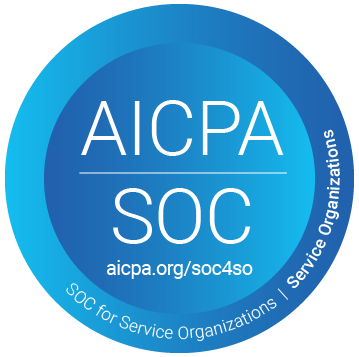
In the intricate realm of claims management, reinsurance stands as a pivotal force, wielding the potential to reshape the landscape of risk mitigation and financial stability.
The dynamic interaction between insureds, insurers, and reinsurers forms the backbone of effective claims management. In this blog, we will delve into the best practices that each of these stakeholders can embrace to optimize reinsurance claims management.
What is Reinsurance?
Reinsurance serves as a strategic partnership between insurance companies to share risks and liabilities. Reinsurance, or insurance for insurers, transfers risk to another company to reduce the likelihood of large payouts for a claim.
Just as insurance offers policyholders protection from monetary loss, reinsurance provides insurers with a safety net against unexpected and severe losses that might otherwise threaten their solvency. This mechanism enables insurers to optimize their risk exposure and maintain a more robust financial position.
Effective reinsurance claims management not only ensures a seamless claims process but also reinforces trust among stakeholders.
Harnessing Financial Stability and Risk Mitigation
At its core, reinsurance is a powerful tool for bolstering financial stability. By distributing risk among multiple insurers, reinsurance safeguards companies against catastrophic losses that could potentially cripple their operations. This is particularly advantageous in sectors susceptible to large-scale events, such as natural disasters or global crises.
Moreover, reinsurance empowers insurers to underwrite larger policies and take on riskier clients, confident in the knowledge that they have a safety net in place. This expansion of capacity fosters growth, enabling insurers to tap into new markets and offer coverage to a wider range of clients.
Unlocking Operational Efficiency
Efficiency is another jewel in the crown of reinsurance. As insurers cede a portion of their risk to reinsurers, they are better equipped to manage their resources efficiently. This can lead to optimized capital allocation, reduced reserve requirements, and enhanced overall operational efficiency.
Furthermore, the expertise of reinsurers can be harnessed to streamline claims processing and validation. Their intricate understanding of complex risks and historical data can expedite the claims settlement process, resulting in quicker payouts and greater customer satisfaction.
How does Reinsurance relate to claims management?
Reinsurance is an invaluable ally in the dynamic world of claims management software. It’s a mechanism that transforms risk into opportunity, fortifying financial stability, fueling growth, and promoting operational efficiency. However, as with any strategic tool, its implementation requires thoughtful consideration to ensure a harmonious balance between risk transfer, cost, and reward. By harnessing the benefits of reinsurance while mitigating its potential downsides, insurers can pave the way for a resilient and prosperous future in the complex landscape of claims management.
Imagine an earthquake that ripples through a region, leaving destruction in its wake. The insurance claims pour in, straining the resources of even the most prepared insurer. Without reinsurance, this could spell the end – a cascade of liabilities too overwhelming to navigate. But with reinsurance, the risk is distributed. The shockwaves are absorbed collectively, preventing any single entity from toppling under pressure.
This ability to share risk isn’t just about survival; it’s about ambition. Reinsurance empowers insurers to dream bigger, to reach farther. It’s like a trampoline for risk – it propels insurers to undertake larger policies, explore untapped markets, and to extend their coverage to those previously deemed too risky to insure.
In essence, the relationship between reinsurance and claims management is one of synergy. Reinsurance augments an insurer’s ability to fulfill its promises to policyholders, even in the face of daunting challenges. It ensures that claims are settled promptly, accurately, and efficiently. By mitigating financial risks, enabling capacity expansion, and contributing to operational excellence, reinsurance becomes an unseen but indispensable force that underpins the very essence of claims management.
What Does Reinsurance Do Different Than Traditional Insurance
Capacity Expansion and Market Accessibility
Reinsurance doesn’t just provide a financial safety net; it also empowers insurers to broaden their horizons. This expansion of capacity has direct implications for claims management. Imagine a niche market or a high-risk segment that an insurer hesitates to cover due to the potential magnitude of claims. With reinsurance, the insurer can tap into these markets with a sense of security, knowing that they have a backstop in case claims escalate beyond their projections.
This expansion isn’t limited to new markets; it also enables insurers to cater to larger clients and undertake bigger policies. In claims management, this translates into handling a diverse array of claims, from the routine to the exceptional. This versatility enhances the insurer’s ability to adapt their claims management process to the specific needs of different policyholders, ensuring a smoother and more personalized experience.
Efficiency through Expertise
Reinsurers bring a wealth of experience and expertise to the table, and this knowledge extends its tendrils into claims management. When an insurer faces a complex or high-value claim, reinsurers can provide insights based on historical data and intricate risk analysis. This collaborative approach can expedite the claims assessment process, leading to quicker settlements and heightened customer satisfaction.
Additionally, reinsurers’ deep understanding of various risks can assist insurers in evaluating claims accurately. This can help prevent fraudulent claims, ensuring that legitimate claims are processed swiftly and efficiently. Such insights ultimately contribute to the insurer’s ability to manage claims with precision and empathy.
The Balance of Risk and Reward
While the benefits of reinsurance are undoubtedly compelling, it’s essential to acknowledge its potential downsides. One of the primary considerations is the cost associated with acquiring reinsurance coverage. Reinsurers charge premiums to absorb a portion of the risk, which can impact an insurer’s bottom line. Striking the right balance between the cost of reinsurance and the potential benefits it offers is a delicate art that requires careful consideration.
Additionally, overreliance on reinsurance can lead to a moral hazard. If insurers believe they are fully shielded from risks through reinsurance agreements, they might take on riskier policies without due diligence, potentially undermining their risk management efforts.
Terra’s got Claims Management Covered
Terra stands out as the best claims management software solution for Reinsurance. With its comprehensive feature set, including automation capabilities, seamless integration, advanced analytics, document management, workflow automation, and top-notch security, Terra provides an all-in-one solution for optimizing your claims management process.
So, are you ready to streamline your claims management process and maximize efficiency? Discover Terra’s power today. Schedule a demo or contact our team today.



